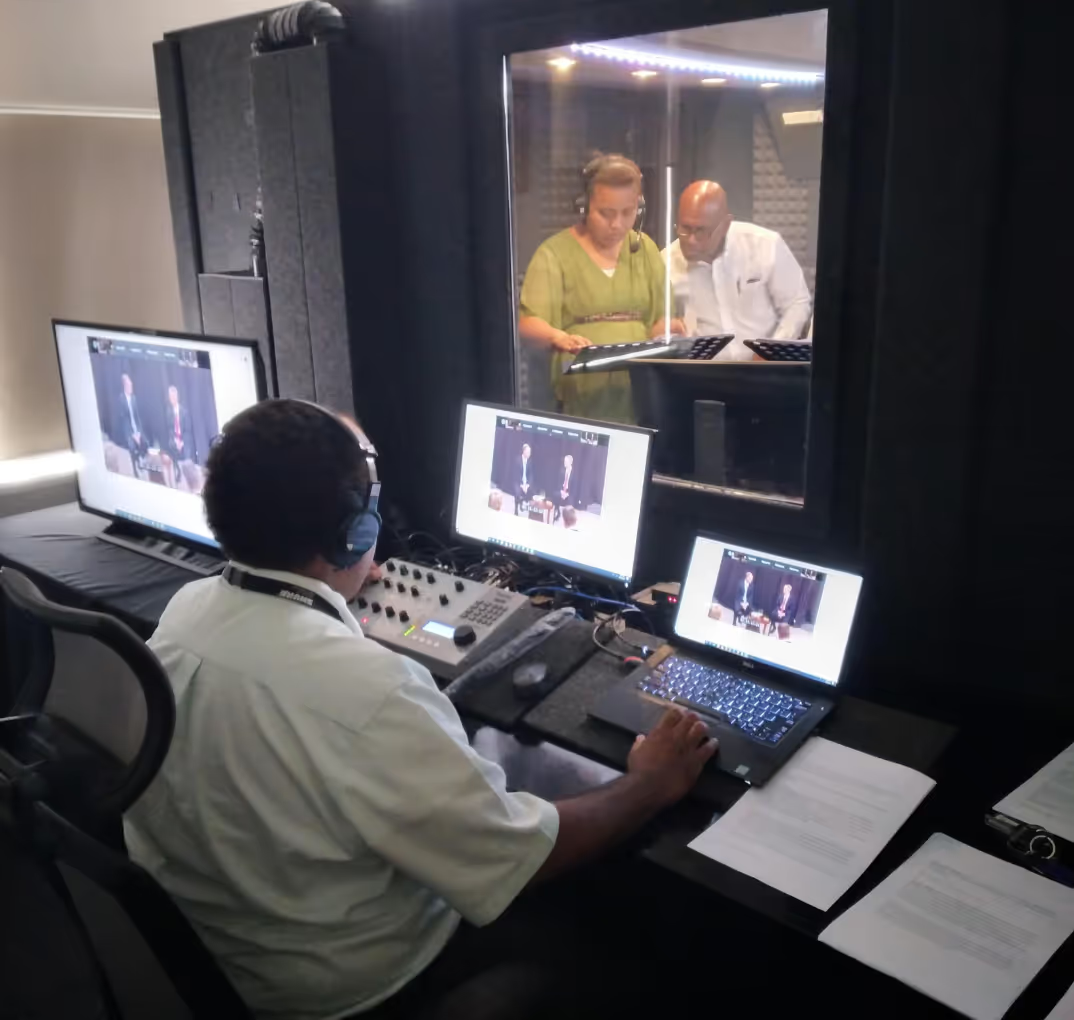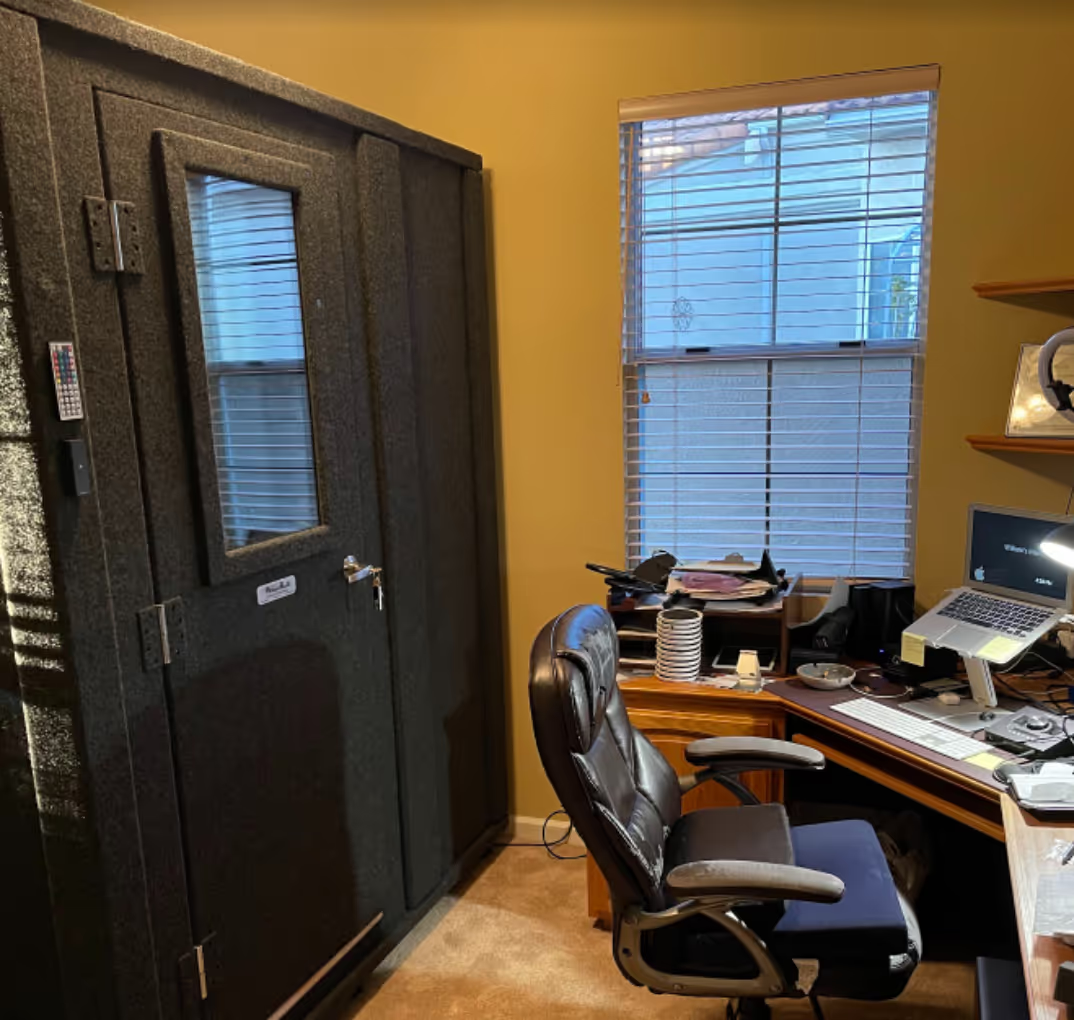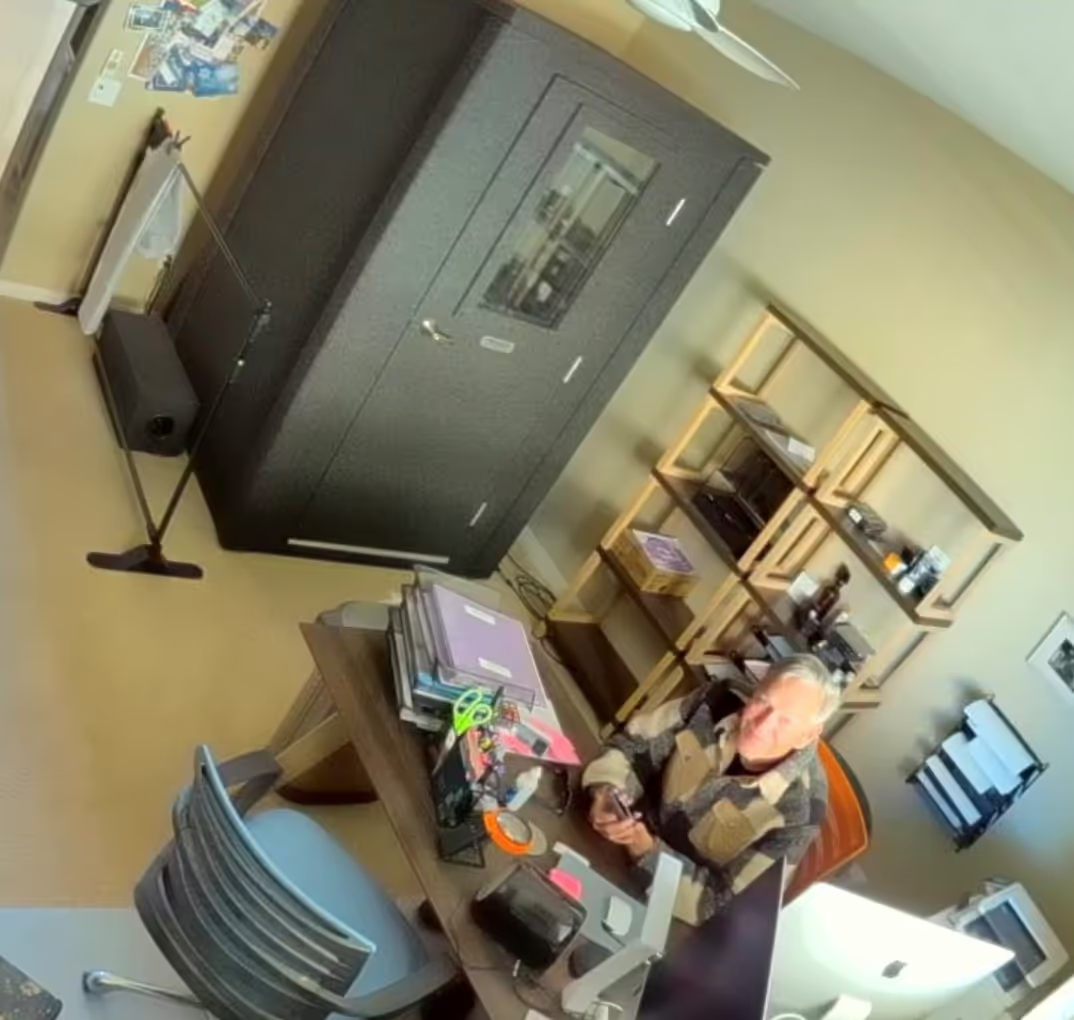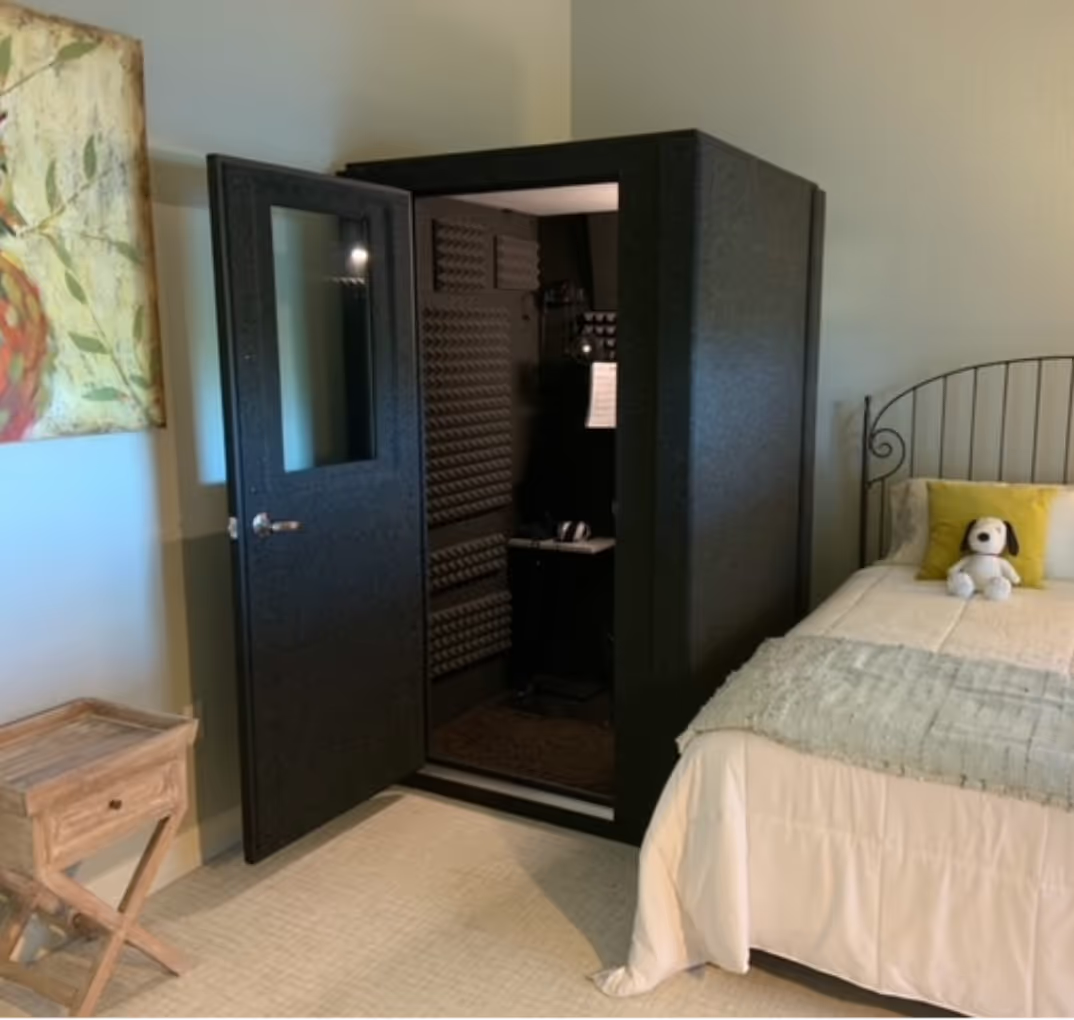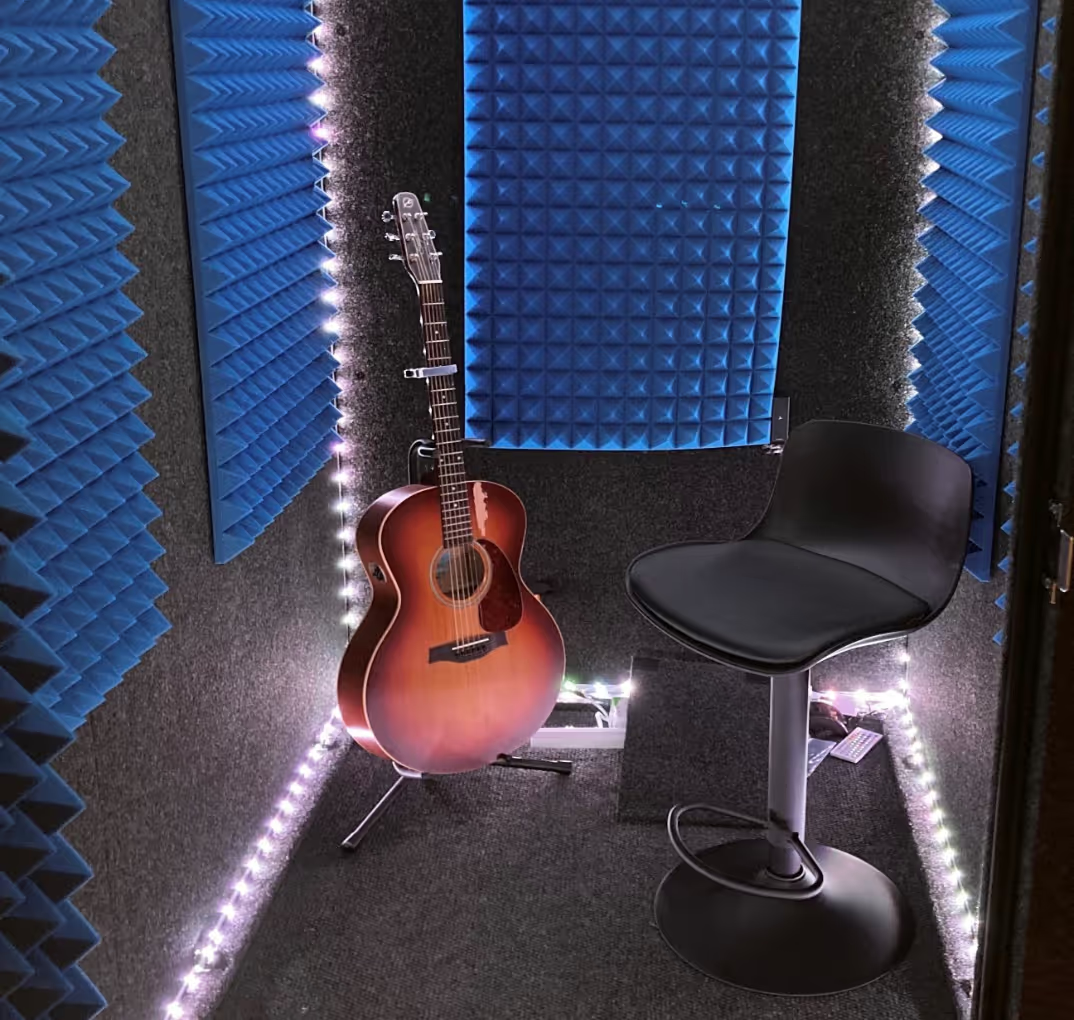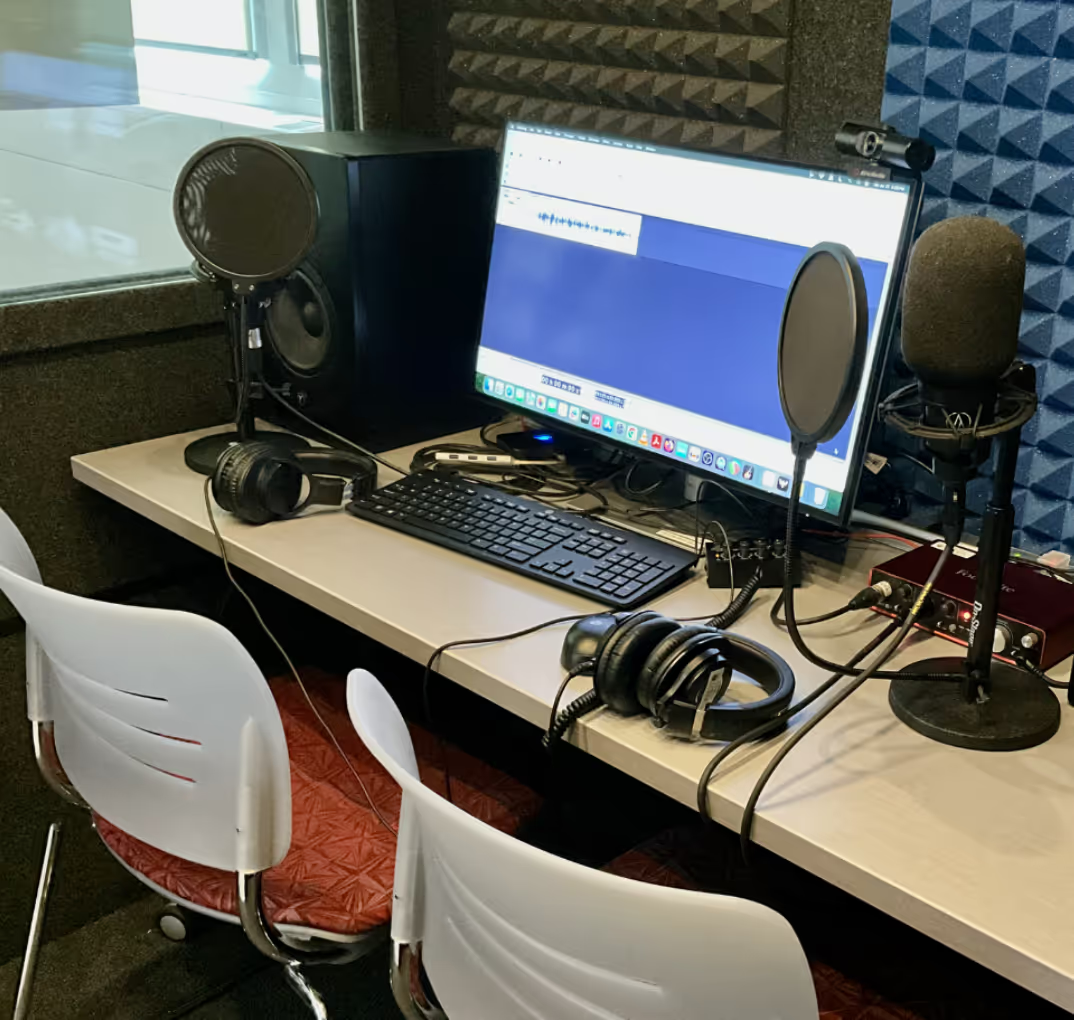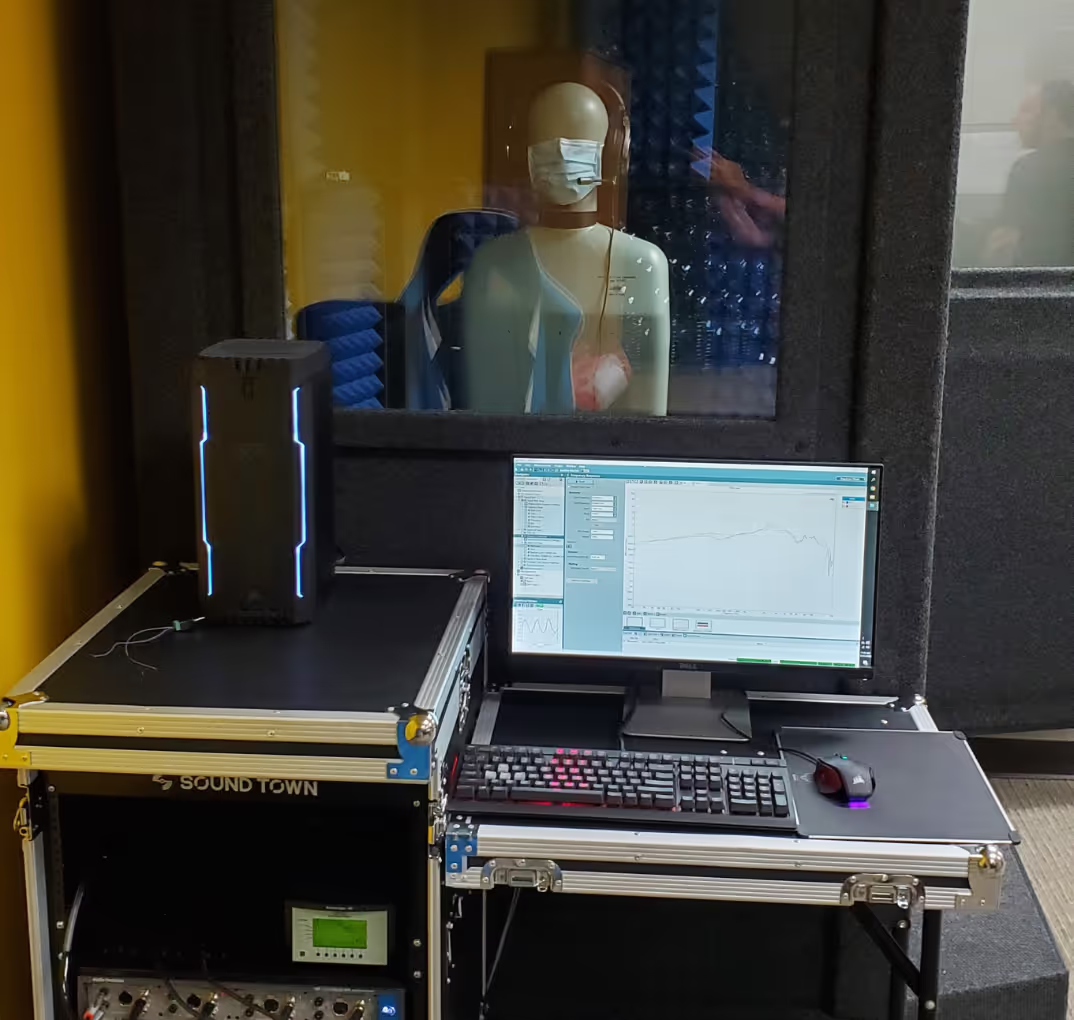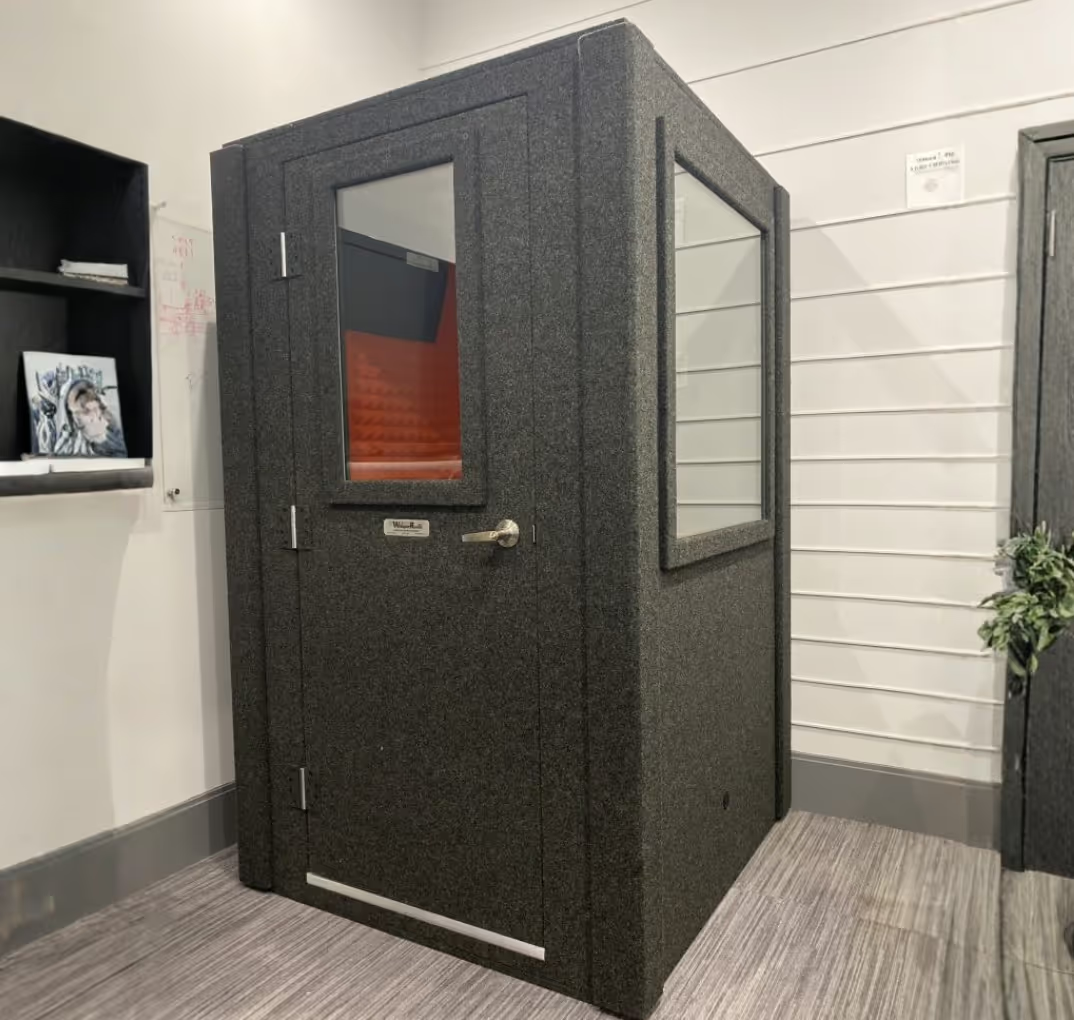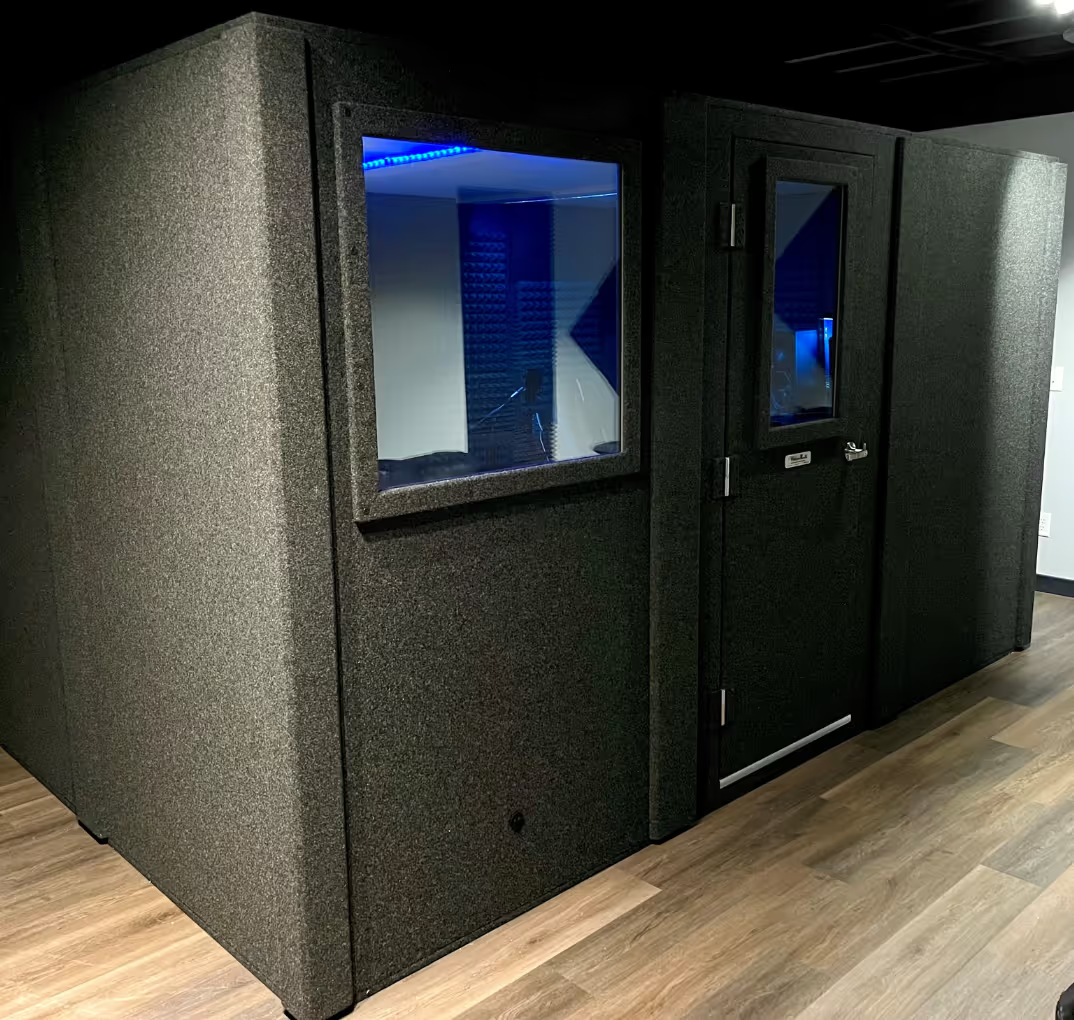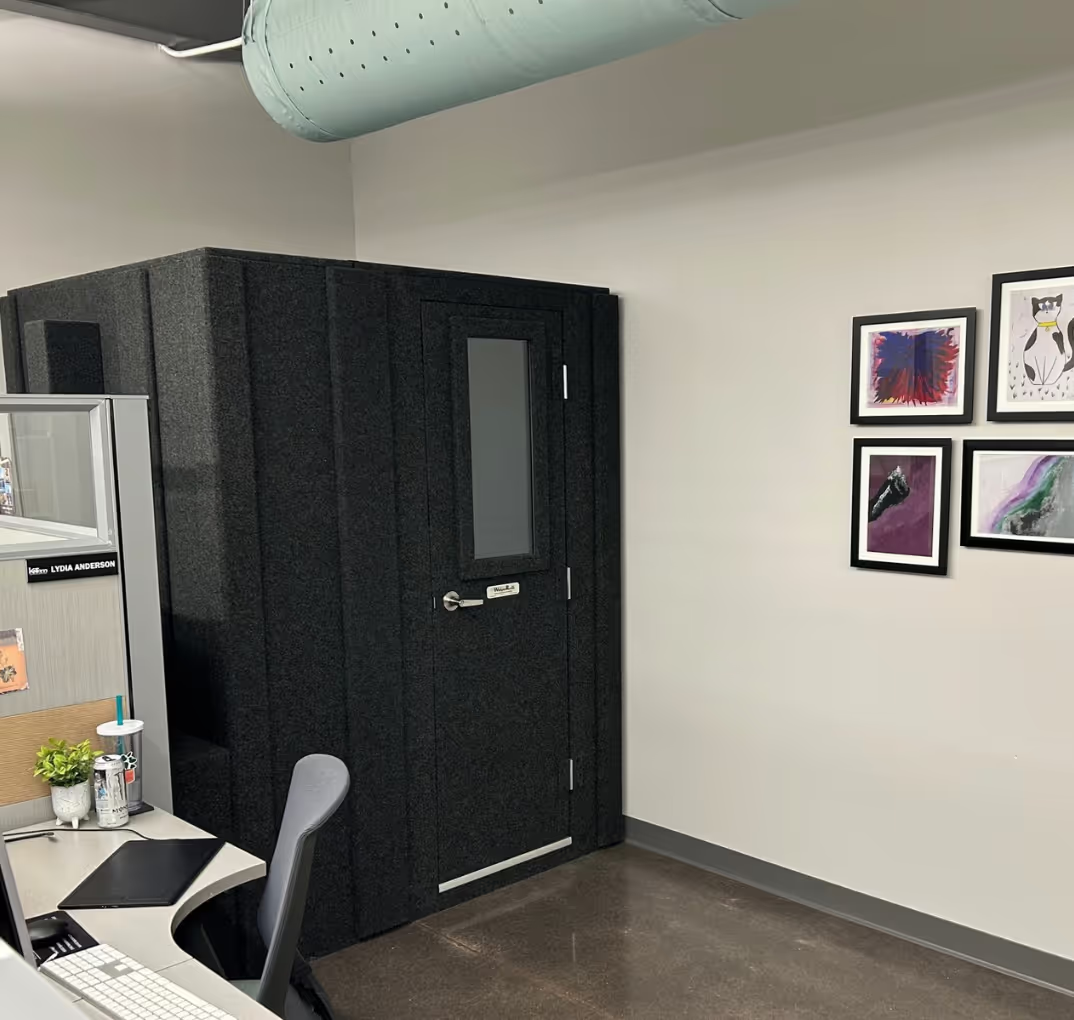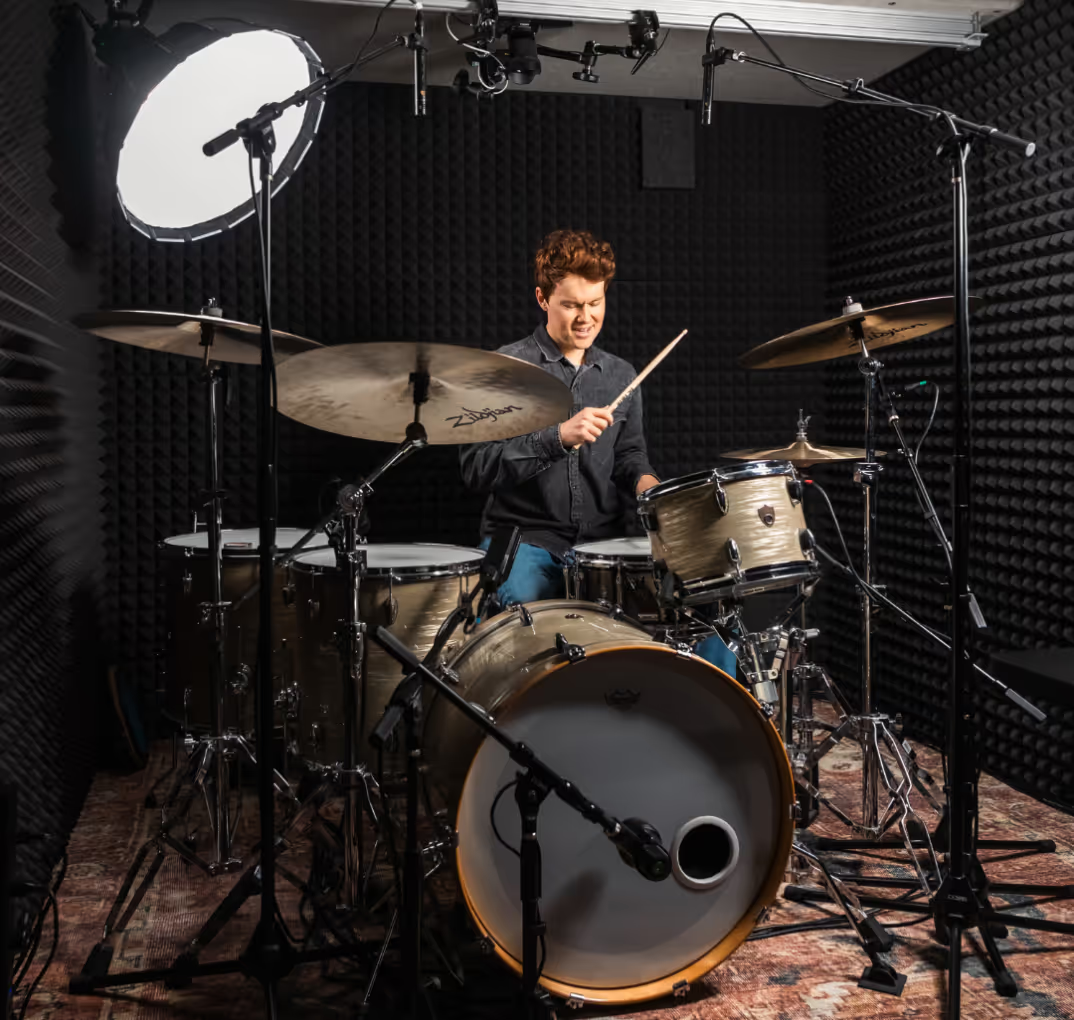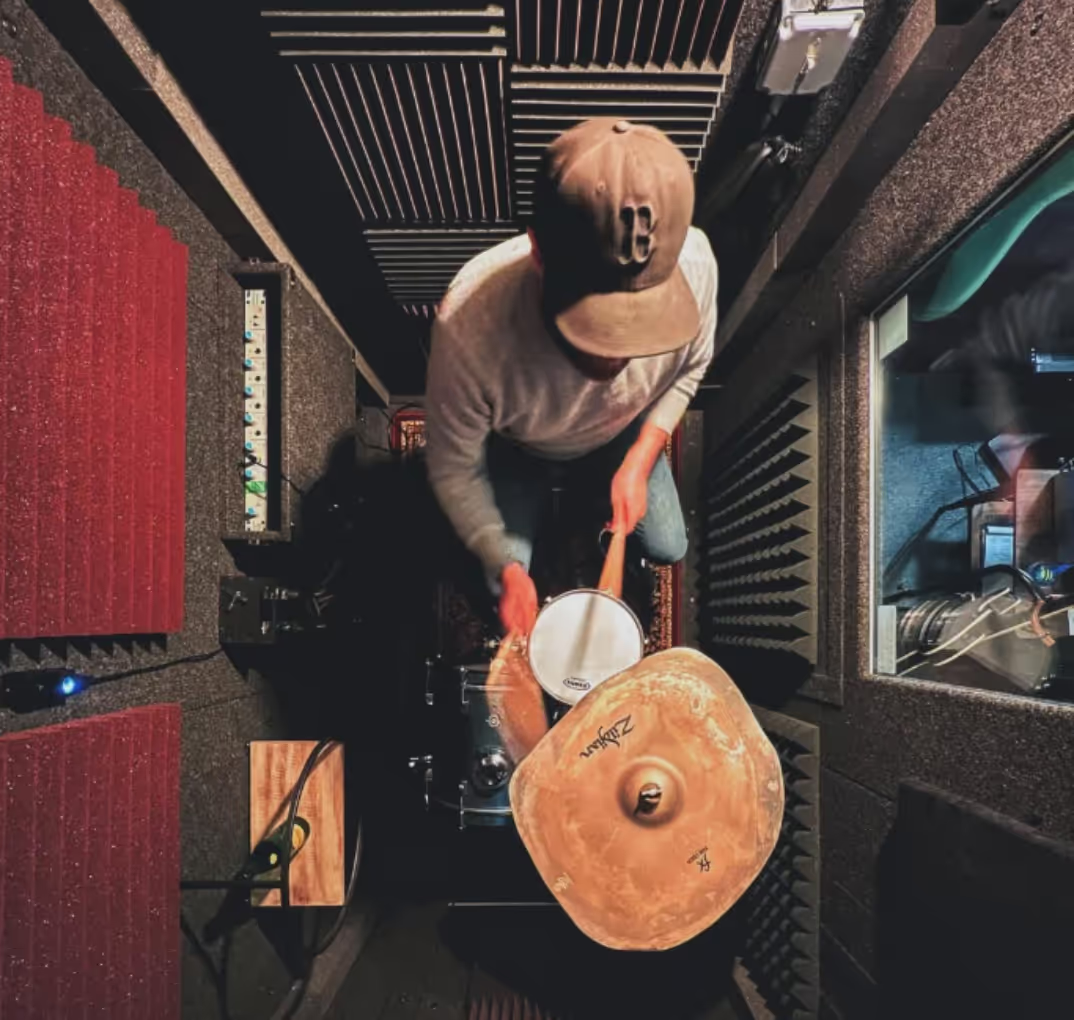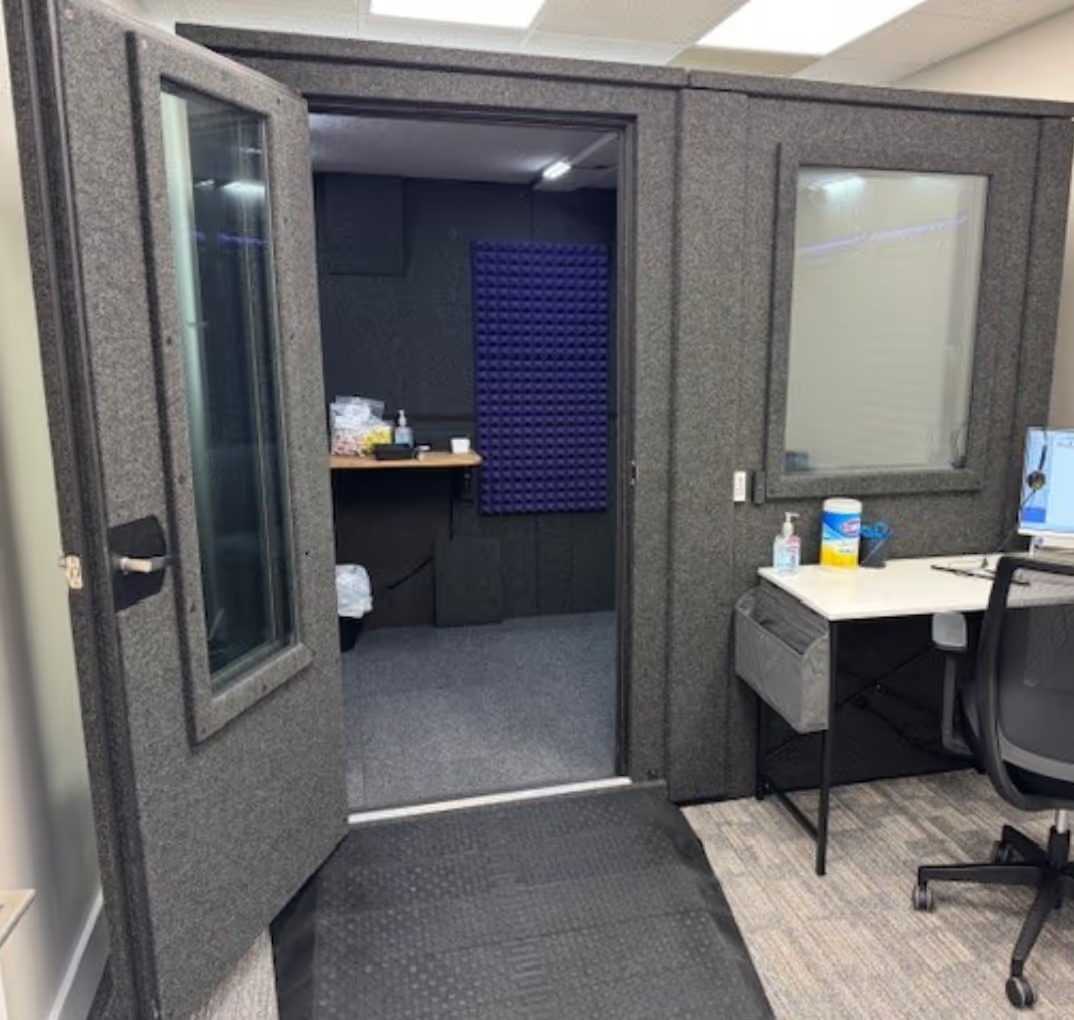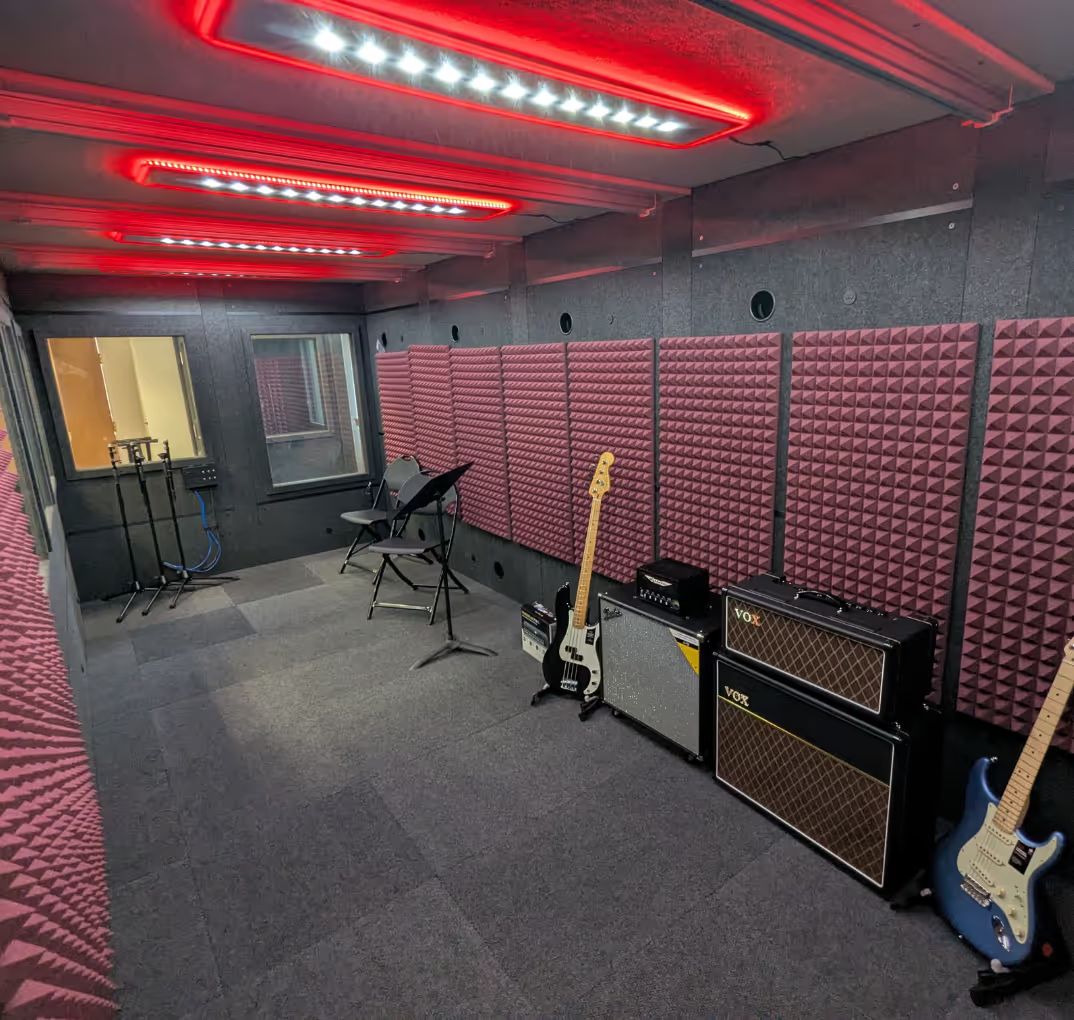Why Drum Isolation Matters in Homes, Studios, and Shared Spaces
Looking for a way to practice or record drums without disturbing your neighbors or overwhelming your space?
Whether you’re setting up a home studio, building a rehearsal room, or controlling volume in a shared environment, choosing the right drum isolation booth is one of the fastest ways to achieve consistent, controlled sound.
Drum volume behaves differently than most instruments, which is why choosing the right isolation solution matters.
This guide explains the essential features drummers should look for, why drums are uniquely challenging to isolate, and how WhisperRoom delivers professional-grade solutions backed by real-world demonstration videos and more than 35 years of engineering expertise.
If you want to explore ready-made options for drumming, visit our Drum & Practice Booths page.
TL;DR: What Every Drummer Needs in a Drum Isolation Booth
- Strong isolation across the frequencies that matter most, especially mid/high transients
- Reliable low-frequency control (kick and floor tom resonance)
- Dense, high-mass wall construction
- Double-wall options for shared walls and loud drummers
- Internal acoustic treatment for balanced, mix-ready drum tone
- Quiet ventilation suitable for long sessions
- Enough space for overhead mics and natural playing posture
- Modular, non-permanent construction suitable for homes and rentals
If a booth checks these boxes, it's built for real drumming — not just marketing.
Why Drums Are the Hardest Instrument to Soundproof
Drums create an unusually difficult combination of acoustic challenges:
- Low-frequency energy (kick, floor tom) that travels through walls, floors, and concrete
- Sharp transients (snare, cymbals) that cut through thin materials
- High sound pressure levels (SPL) compared to nearly every other instrument
- Structural vibration that travels into framing, floors, and shared walls
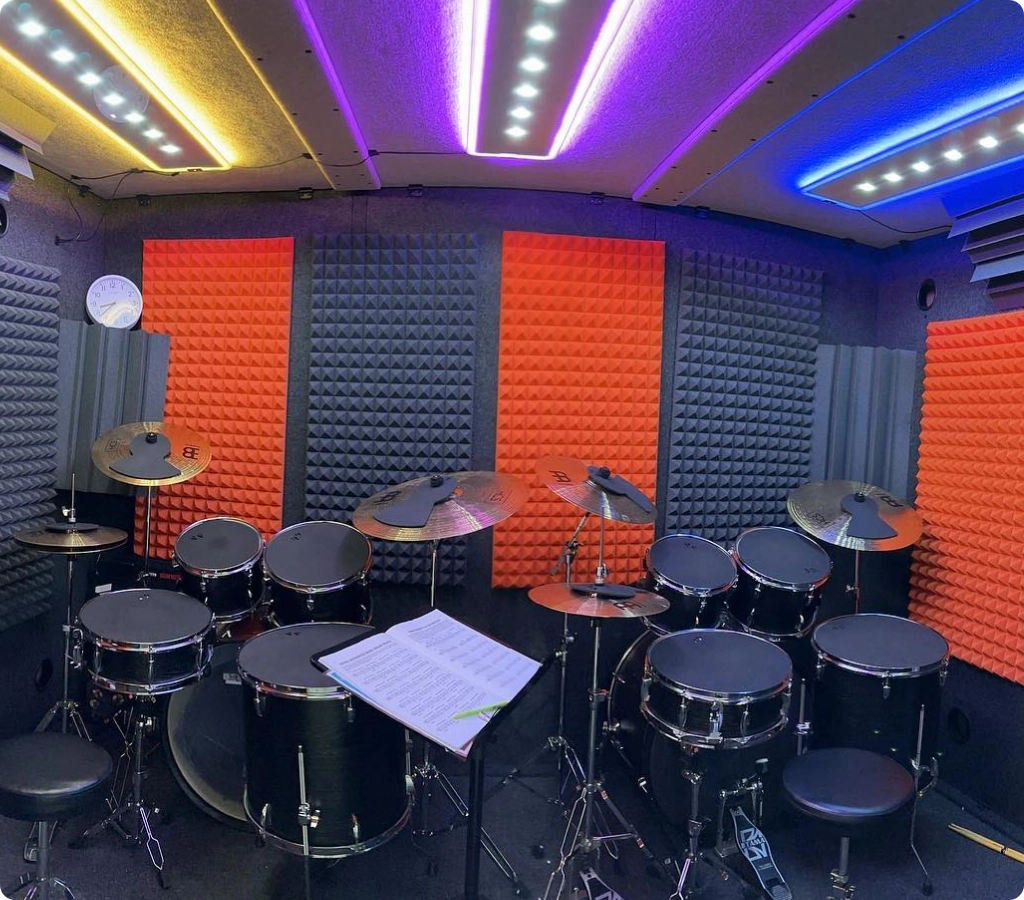
Unlike vocals or guitars, drum volume doesn’t just disperse — it moves, and it moves far.
This combination of deep bass, sharp transients, and vibration is why generic sound booths, foam, and DIY builds struggle and why purpose-built isolation is essential (learn the difference between treatment and isolation).
Why Plexiglass Drum Shields Don’t Reduce Noise (and What Actually Works)
Many drummers start with plexiglass shields, cages, or portable enclosures hoping for real volume reduction. Unfortunately, they don’t deliver isolation.
A plexiglass shield:
- Reduces blast directly in front of the drums
- Does not block low fequencies
- Does not stop sound from leaking into adjacent rooms
- Does not isolate enough for recording
- Often creates harsh, reflective acoustics
Shields were designed for on-stage volume redirection, not isolation.

Drummers consistently move from shields → to DIY attempts → to a WhisperRoom once they realize what true isolation requires:
• High-mass
• Decoupling
• Tight seals
• Controlled airflow
• Balanced internal acoustics
A WhisperRoom does what shields cannot.
This distinction matters because thousands of drummers search for “drum shield isolation” every month without realizing that shields isolate almost nothing.
Real Drum Isolation Examples (Standard vs. Enhanced WhisperRoom Booths)
Before diving into the engineering, here’s what real WhisperRoom drum isolation looks and sounds like.
1. Standard (Single-Wall) Drum Isolation Demo
Ideal for moderate isolation, suburban homes, and general practice.
2. Enhanced (Double-Wall) Drum Isolation Demo
Best for maximum isolation, shared walls, and professional recording.
Premium Drum Isolation Spotlight: Real-World WhisperRoom Demo & Full House dB Test
One of the strongest real-world demonstrations of WhisperRoom performance comes from drummer Jeff Randall, who struggled for months to control drum volume after moving into a new home. His bonus room shook the house. His family was overwhelmed. Nothing worked.
Then he found a used 8' × 12' Enhanced WhisperRoom and decided to give it a try.
Two weeks later, he summed up the experience in one line:
“It’s very effective and I’m really pleased with the results.”
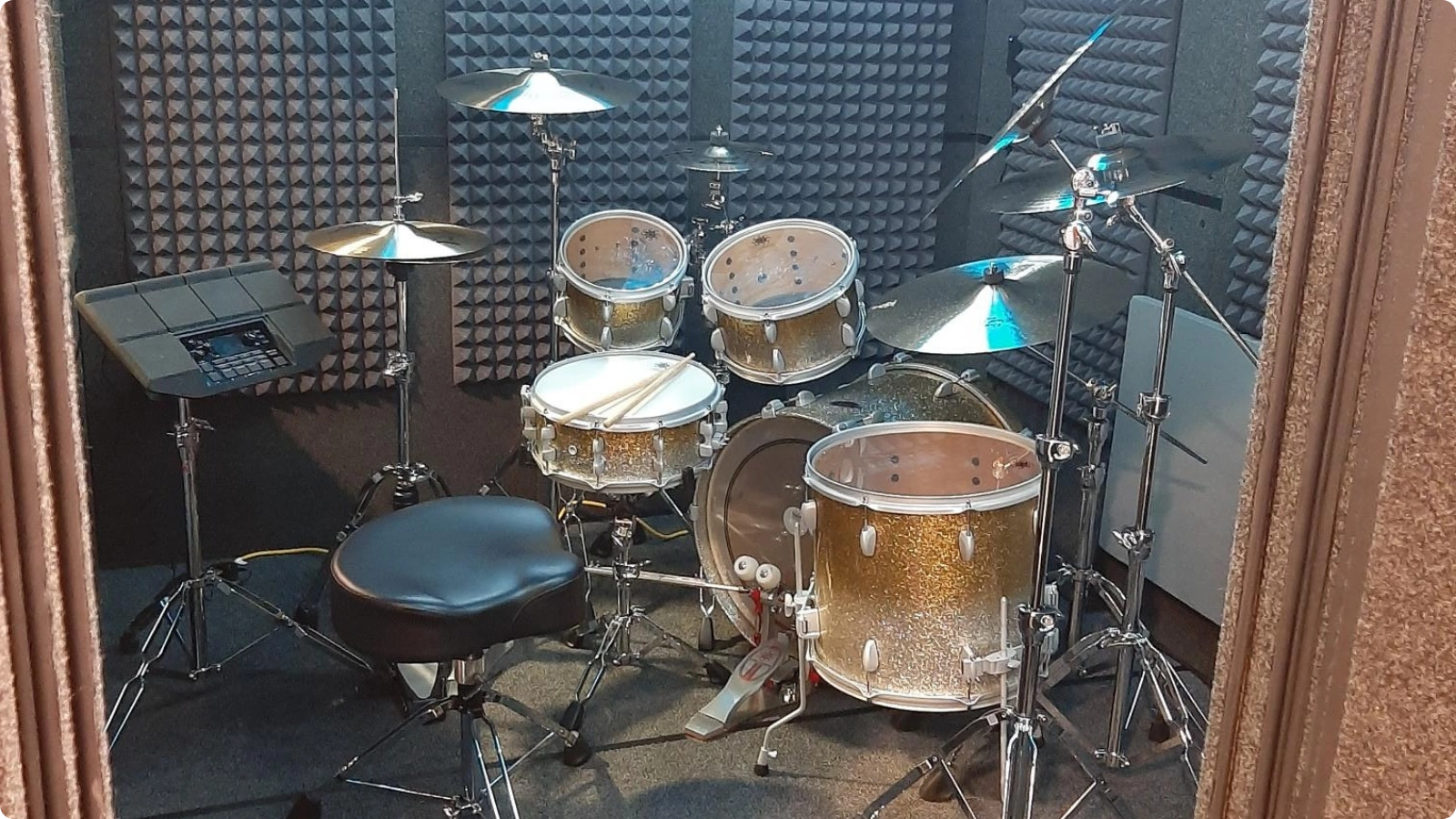
Inside the WhisperRoom: What Makes This Drum Booth So Effective
In the video, he shows exactly why:
✓ Thick, high-mass wall construction
✓ Tight seals and durable hardware
✓ Double floors, double ceilings, and double walls
✓ A comfortable, studio-ready interior
He closes the Enhanced model door and the deep, unmistakable “thunk” instantly shows how tight the seal is.
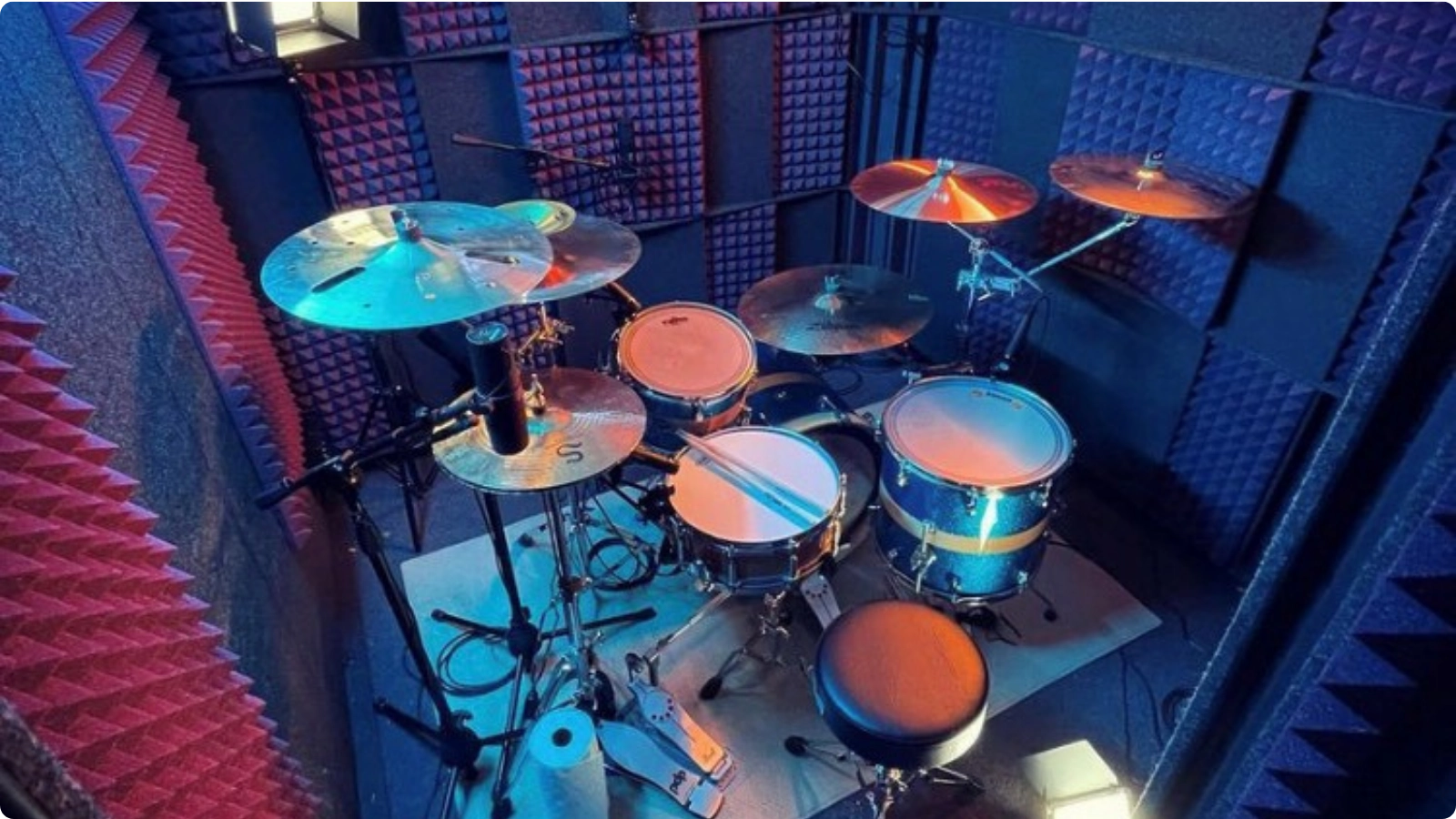
🎥 Watch the Full WhisperRoom Drum Performance Video
🔊 Full-House Sound Test: Drum Volume Reduction in Every Room
In the video, he compares an open drum kit in the garage vs. the same kit inside the WhisperRoom, measuring volume in every room - even outside the house.
Here are the exact measurements:
Garage Test (volume measured in the garage)
- Drumming outside of booth: 108 dB
- Drumming inside of booth: 74 dB
- Reduction: 34 dB (about 1,000 times less powerful, about one-eighth as loud)
✓ This exceeded our published 75% reduction.
Kitchen Test (shares a wall with the garage)
- Outside booth: 65 dB
- Inside booth: 43 dB
- Reduction: 22 dB (about 100 times less powerful, roughly one-quarter as loud)
✓ Exactly in line with expected WhisperRoom performance.
Bedroom Test (two rooms away)
- Outside booth: 43 dB
- Inside booth: 27 dB
- Reduction: 16 dB (similar to a soft whisper)
✓ Shows how quickly drum energy decays when properly contained.
Bonus Room Test (directly above the garage)
- Outside booth: 66 dB
- Inside booth: 42 dB
- Reduction: 24 dB (similar to a quiet library, about 100 times less powerful)
✓ Strong performance despite being directly above the drum kit.
Outside the House Test (sidewalk near the garage)
- Outside booth: 73 dB
- Inside booth: 51 dB
- Reduction: 22 dB (comparable to neighborhood ambience)
✓ Street noise actually spikes louder than the drums.
His Final Verdict:
"WhisperRoom is true to their word. This thing reduces volume by about 75 percent."
What Makes a Professional Drum Isolation Booth (Engineering That Matters)
A professional drum isolation booth must balance mass, decoupling, airflow, space, and internal acoustics.
1. High-Performance Sound Isolation (Low-End + Transients)
Drums generate energy across the full spectrum:
• Low frequencies (kick, floor tom)
• Midrange power (toms, snare)
• High-frequency attack (cymbals, transient crack)
Low frequencies are the hardest to isolate, even with high-mass walls.
- At 125 Hz, Standard and Enhanced differ by only 1 dB (typical for deep bass)
- From 250 Hz to 4000 Hz, Enhanced offers 9–13 dB more reduction - exactly where perceived drum loudness lives
This is why Enhanced booths deliver a dramatically quieter perceived result, even if deep bass improves only slightly.
Look for:
• High-mass walls
• Decoupled panel systems
• Tight door/window seals
• Optional double-wall construction
• Floor isolation and vibration control

How WhisperRoom Helps
- Standard (Single-Wall): Moderate isolation
- Enhanced (Double-Wall): Stronger transient + midrange control, ideal for shared walls and loud drummers
Most drummers choose Enhanced for true peace of mind.
2. Balanced Internal Acoustics for Recording Drums
Isolation keeps sound in; acoustic treatment shapes tone (learn more about the difference here).
A great drum booth avoids:
• Boxiness
• Harsh reflections
• Uneven midrange buildup

Look for:
• Midrange absorption
• Tone-preserving treatment
• Adjustable acoustic placement
How WhisperRoom Helps
WhisperRooms offer:
• Bass traps
• StudioFoam
• Audimute panels
Perfect for overheads, tom mics, room mics, and genre-specific tuning.
3. Quiet Ventilation That Works While Recording
You need airflow, not fan noise.
Look for:
• Silenced airflow paths
• Low-noise fans
• Ventilation that can stay on while recording
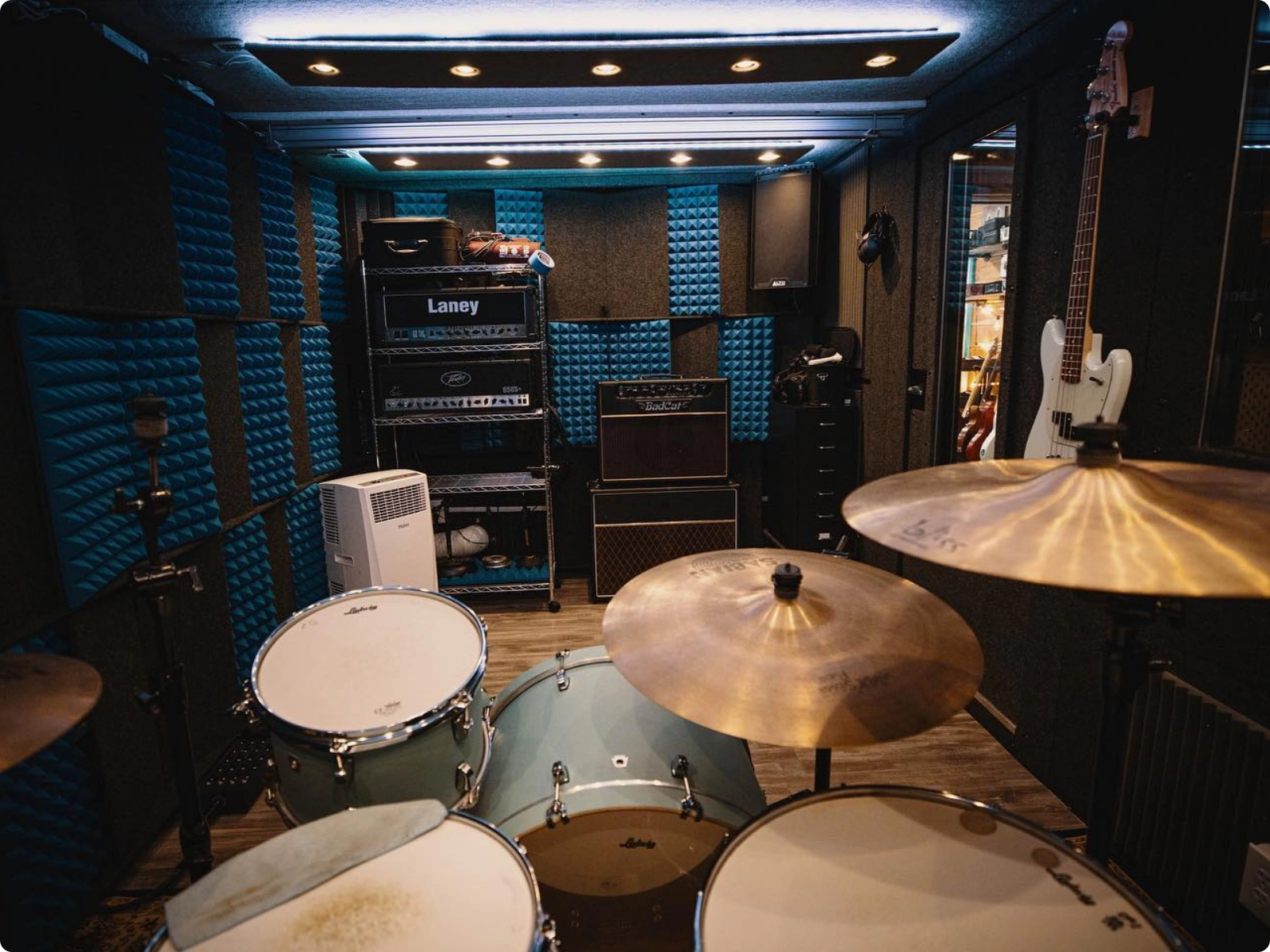
How WhisperRoom Helps
Our normal ventilation system is already quiet, but the VSS + EFS system provides steady airflow with extremely low noise, perfect for long practice or recording sessions.
4. A Booth Layout That Fits Full Drum Kits and Overheads
Drumming requires:
• Full arm extension
• Cymbal height
• Overhead mic clearance
• Natural movement

How WhisperRoom Helps
With 26 booth sizes, WhisperRoom offers ideal drum-friendly layouts:
• 8' x 8' Drum Booth
• 8' x 12' Drum Studio
Both support multi-mic setups, natural body movement, and comfortalbe long sessions.
5. Modular Construction for Easy Assembly and Relocation
Permanent builds are expensive and not renter-friendly.

WhisperRooms:
• Assemble with basic tools
• Break down into manageable panels
• Fit through doorways
• Move easily between rooms or homes
6. Built to Last: Durability for Home, Studio, and School Use
WhisperRoom booths last for decades and are used in:
• Music schools
• Professional studios
• Rehearsal facilities
• Thousands of home studios
Replacement parts and accessories are always available.
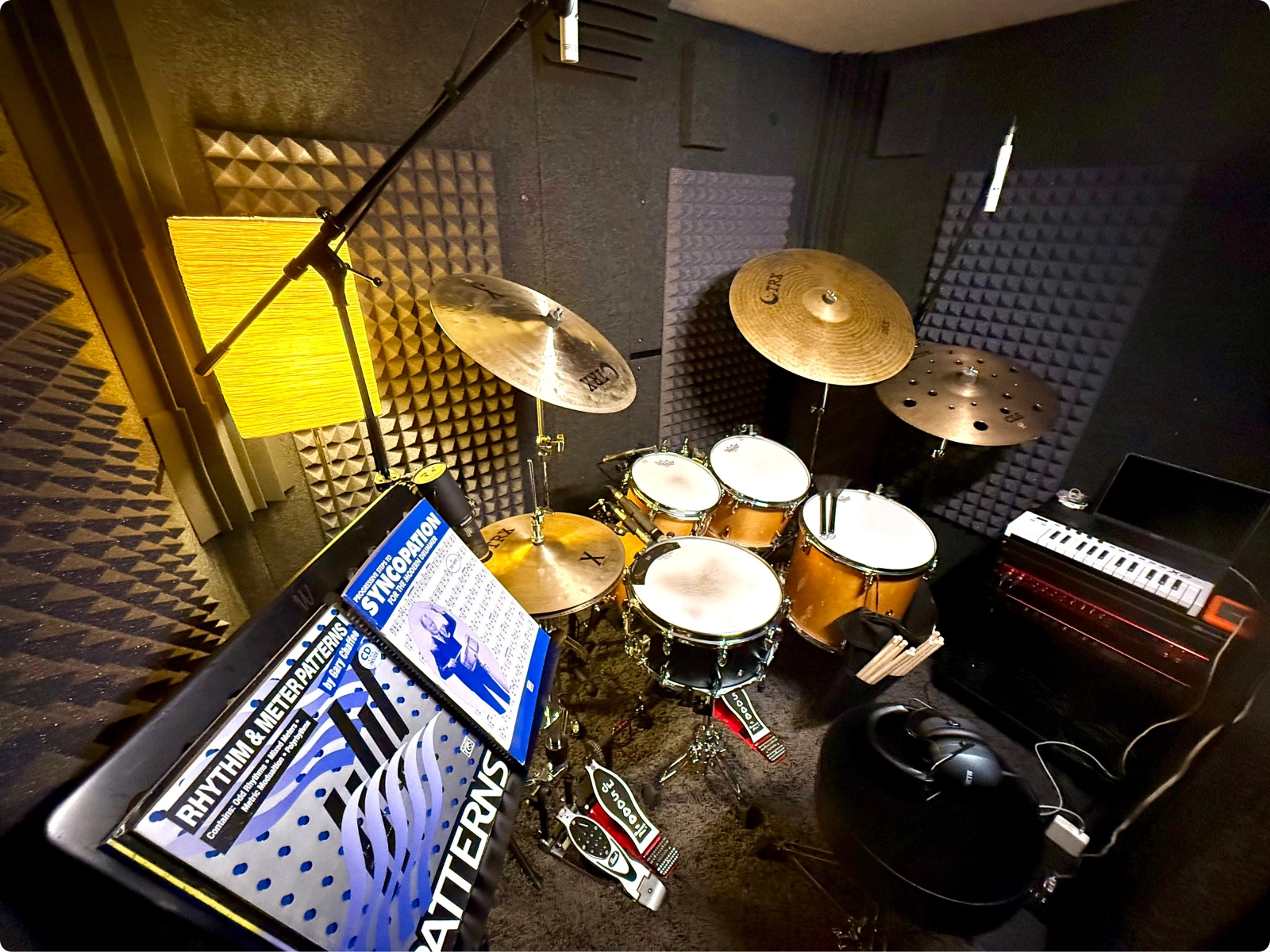
Standard vs. Enhanced Drum Isolation Booths: Which Should You Choose?
Standard (Single-Wall)
Best for:
• Home practice
• Quieter homes
• Budget-friendly setups
Benefits:
• Good overall isolation
• Lighter construction
• Ideal for moderate SPL drumming
Enhanced (Double-Wall)
Best for:
• Loud drummers
• Shared walls (apartments / townhomes)
• Recording environments
Benefits:
• Strongest mid/high-frequency control
• Major reduction in snare/cymbal transients
• Much better control of kick/floor tom resonance
• Best choice for sensitive environments
Most drum customers choose Enhanced for true peace of mind.
Drum Booth Comparison Table (Sound Isolation, Size, and Use Cases)
WhisperRoom Drum Packages: 8′×8′ Drum Booth and 8′×12′ Drum Studio
WhisperRoom offers two dedicated drum packages designed for controlled volume, reliable isolation, and a comfortable recording or rehearsal environment. These packages include curated acoustic treatment and ventilation upgrades built specifically for drum performance.
While the Drum Booth (8' × 8') and Drum Studio (8' × 12') are the most popular, any WhisperRoom size can be configured as a drum package - including, but not limited to:
• 6' x 6' (MDL 7272)
• 6' x 8' (MDL 7296)
• 8' x 10' (MDL 96120)
• 8' x 14' (MDL 96144)
The package benefits stay the same regardless of booth size.
Drum Booth - 8' x 8' Enhanced (Double-Wall)
A popular, efficient solution for drummers who need strong isolation in a manageable footprint.
Includes:
✓ Enhanced double-wall isolation
✓ Audimute acoustic treatment package
✓ Eight LENRD Bass Traps
✓ Auralex StudioFoam panels
✓ LED studio lighting
✓ Cable pass-through
✓ Modular, renter-friendly design
Watch the Product Overview Video:
A quick walkthrough of the Drum Booth package, features, and layout.
Drum Studio - 8' x 12' Enhanced (Double-Wall)
A full-scale drumming environment built for loud players, multiple kits, and engineers who need maximum isolation and recording space.
Includes:
✓ Enhanced double-wall isolation
✓ Full Audimute acoustic package
✓ Eight LENRD Bass Traps for low-end control
✓ Auralex StudioFoam panels
✓ Three multicolored LED Studiolights
✓ Quad Ventilation Systems for steady airflow
✓ VSS internal fan silencing and external fan silencers (EFS)
✓ Door window and wall window for visibility
✓ Nine cable passages for clean routing
✓ Large footprint for overheads, room mics, and natural playing posture
Watch the Product Overview Video:
A detailed walkthrough showing the features of the Drum Studio package.
Ready to compare drum booth sizes?
Explore the full lineup of WhisperRoom models for drummers:
→ Standard vs Enhanced Booths
→ Drum & Practice Booth Packages
→ Size & Noise Reduction Guide
Frequently Asked Questions About Drum Isolation Booths
Can a WhisperRoom completely silence drums?
No booth fully silences drums, but Enhanced models reduce volume to neighbor-friendly levels.
Can WhisperRooms be used in apartments?
Yes. Enhanced models are ideal for shared walls and close neighbors.
Which size is best for drumming?
It really depends on the user's preference. 8' × 8' fits most kits.
8' × 12' give more space for multi-mic setups or multiple players.
Are WhisperRooms better than plexiglass shields?
Yes. Drum shields redirect sound, but they do not isolate it.
Can you record drums professionally in a WhisperRoom?
Absolutely. Many studios track full drum sessions inside WhisperRooms.
How long is the setup time for a Drum Booth?
Most Enhanced booths take 6-8 hours to assemble, depending on size and experience.








.avif)
.avif)
.avif)

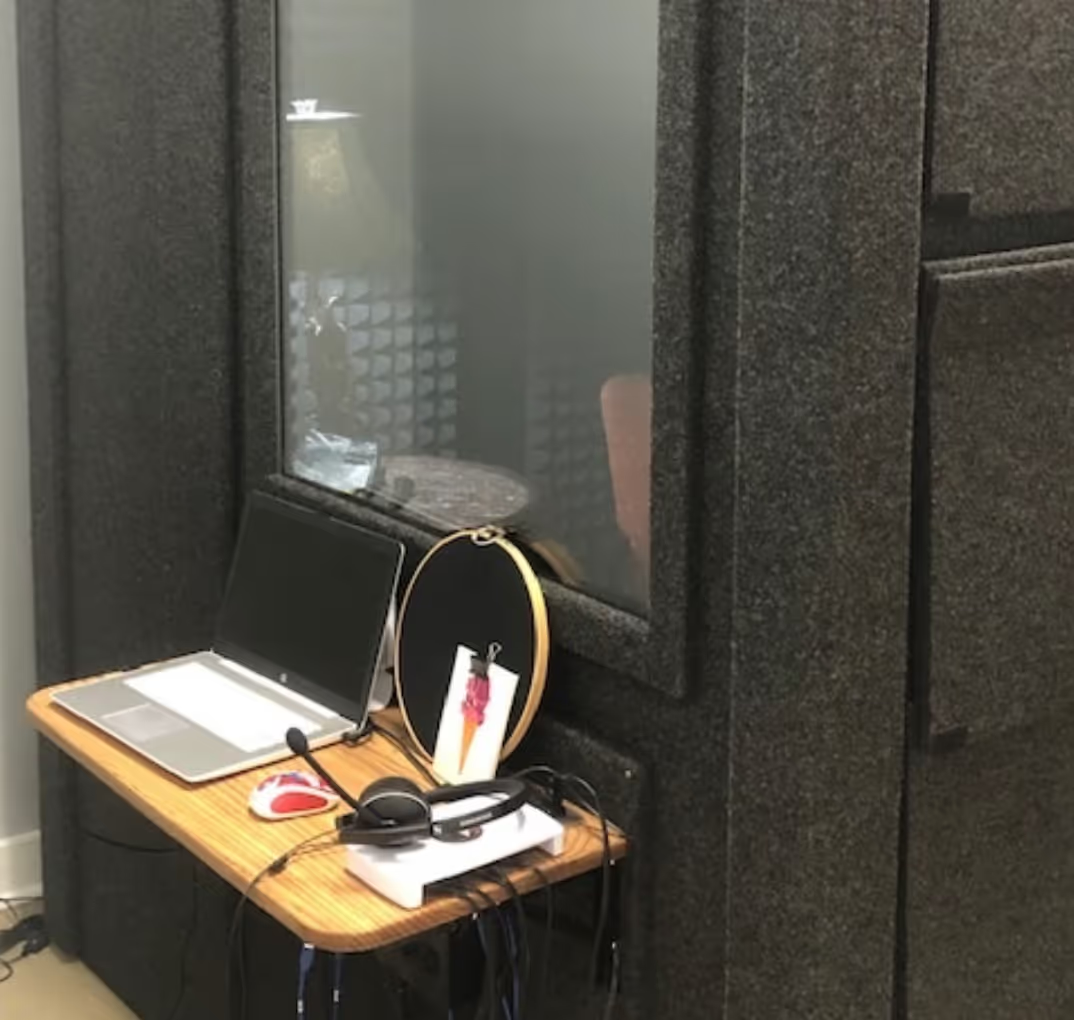
.avif)
.avif)

.avif)
.avif)
.avif)
.avif)
.avif)
.avif)
.avif)
.avif)
.avif)
.avif)
.avif)
.avif)
.avif)
.avif)

.avif)
.avif)

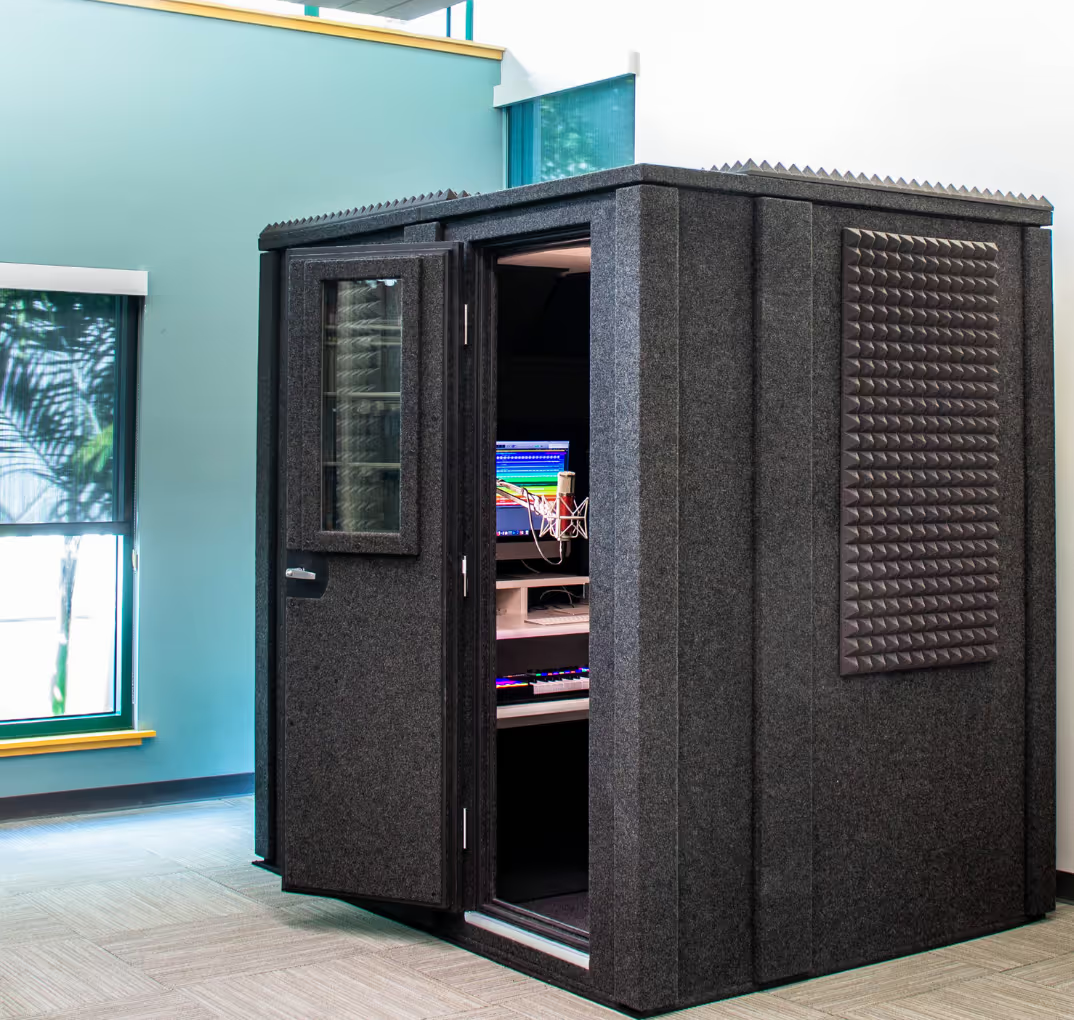
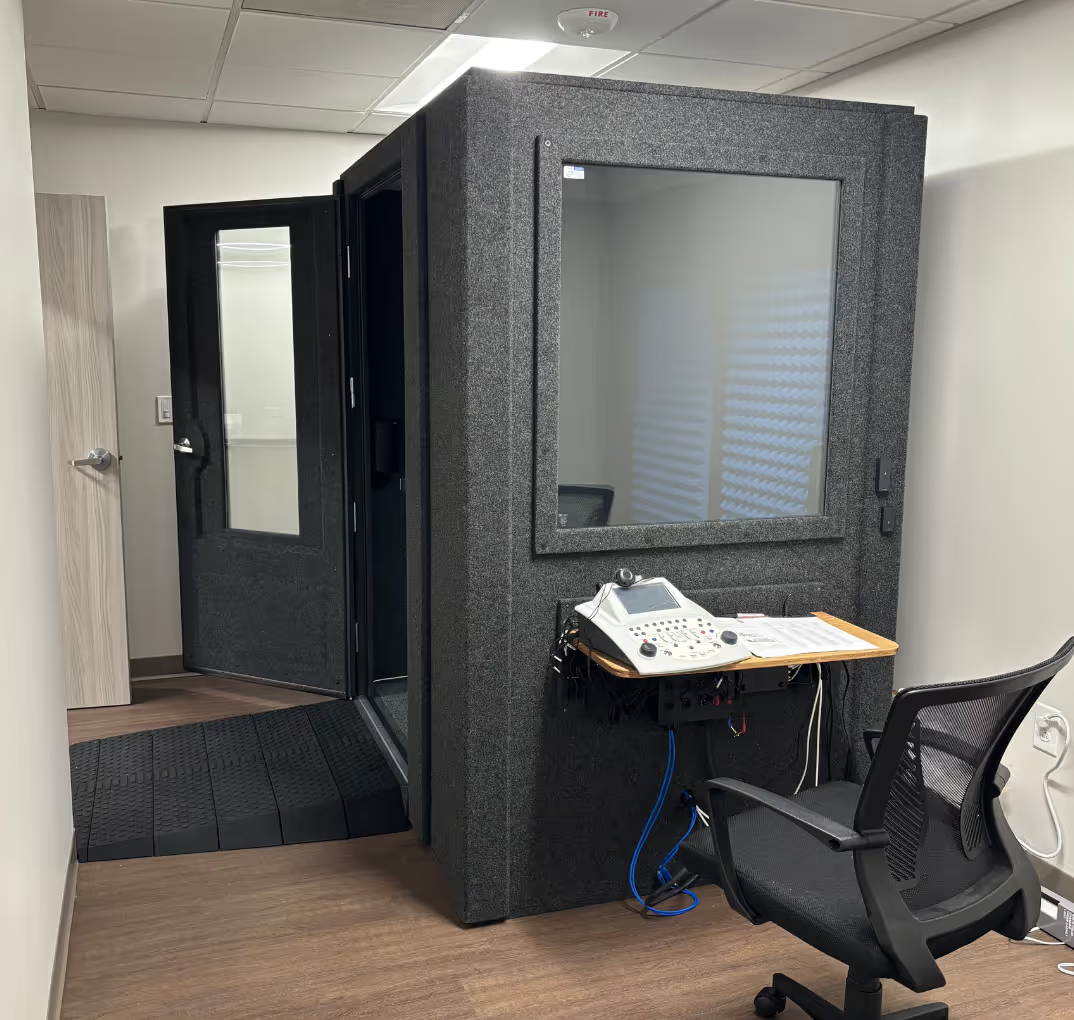
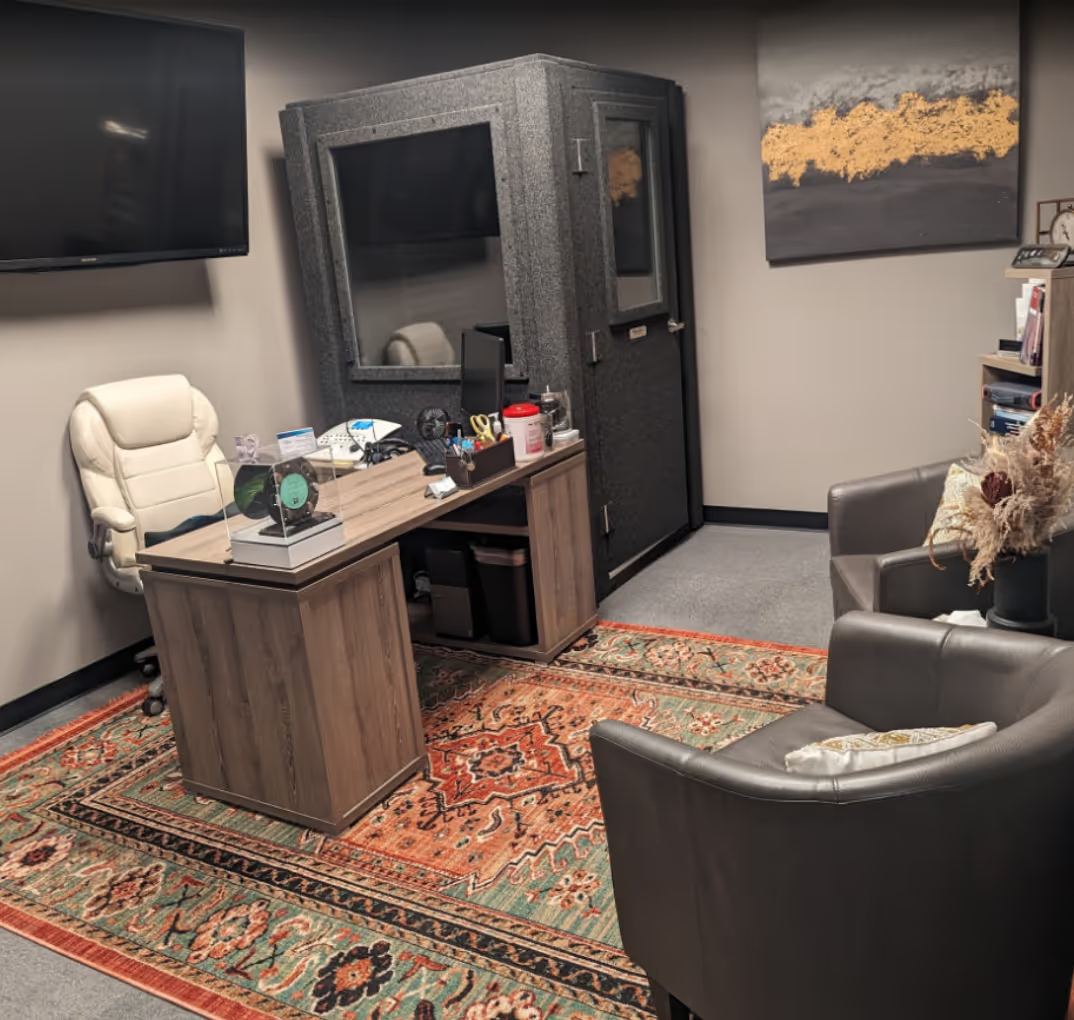



.avif)

